It’s all about the music
Cognitive Benefits/Facts:
- Have you ever felt chills down your spine while listening to music? According to a study by Nusbaum and Silvia (2010), over 90% of us have. How powerful the effects of music, though, depends on your personality. People who are high in one of the five personality dimensions called ‘openness to experience’, are likely to feel the most chills while listening to music (Nusbaum and Silvia, “Shivers and Timbres Personality and the Experience of Chills From Music,” Social Psychology & Personality Science, 2010).
- A Stanford study shows that music engages areas of the brain which are involved with paying attention, making predictions and updating events in our memory (Baker, Mitzi. “Music moves brain to pay attention, Stanford study finds.” Stanford Medicine. Accessed February 24, 2015).
- Much like expert technical skills, mastery in arts and humanities is closely correlated to a greater understanding of language components (Trei, Lisa. “Musical training helps language processing, studies show.” Stanford News. Accessed February 24, 2015).
- Musicians are found to have superior working memory compared to non-musicians (Berti, et al., 2006; Pallesen et al., “Cognitive Control in Auditory Working Memory Is Enhanced in Musicians,” PLOS One, June 15, 2010).
- Musical experience strengthens many of the same aspects of brain function that are impaired in individuals with language and learning difficulties, such as the neural timing precision which allows differentiation between speech syllables (Kraus, N. and B. Chandrasekaran, Music training for the development of auditory skills. Nature Reviews Neuroscience, 2010.11: p. 599-605.)
- Both music and language are complex communication systems, in which basic components are combined into high-order structures in accordance with rules. Whether music was an evolutionary precursor to language or merely a byproduct of cognitive faculties that developed to support language, music is pervavise across human cultures and throughout history (Nina Kraus, Jessica Slater, “Music and language: relations and disconnections,” The Human Auditory System: Fundamental Organization and Clinical Disorders, Vol. 29, 3rd Series, 2015).
- Cross-sectional comparisons of musicians to non-musicians have established a variety of musician enhancements in auditory skills and their neural substrates, extending from enhanced perception and neural encoding of speech, most notably in suboptimal listening conditions, to more proficient auditory working memory and auditory attention (Nina Kraus, Dana L. Strait, “Emergence of biological markers of musicianship with school-based music instruction,” Annals of the New York Academy of Sciences, 2015).
- Adults who receive formal music instruction as children have more robust brainstem responses to sound than peers who never participate in music lessons and that the magnitude of the response correlates with how recently training ceased. These results suggest that neural changes accompanying musical training during childhood are retained in adulthood (Skoe, E. & Kraus, N. 2012. A Little Goes a Long Way: How the Adult Brain Is Shaped by Musical Training in Childhood, Journal of Neuroscience, 32, 34, 11510. DOI: 10.1523/JNEUROSCI.1949-12.2012).
- Music therapy utilizing improvisation on hand drums helped veterans modulate their “often misdirected, exaggerated, and unrecognized emotions,” with the goal being generalization of these skills to everyday life. Drumming provided an opportunity for the men to express and control their feelings and helped build a sense of connectedness and group mission (Burt, J. W. (1995). Distant Thunder: Drumming with Vietnam Veterans. Music Therapy Perspectives, 13, 110-112; quoted in, “Music Therapy and the Military,” by Ronna Kaplan, Huffington Post, March 4, 2013).
- Researchers found that those who played an instrument for two years showed a stronger “neurophysiological distinction” between certain sounds than children who didn’t get the instrumental training. For instance, the music-makers more easily could tell the difference between the words “bill” and “pill,” a key skill in learning to read (Skoe, E. & Kraus, N. (2012). A Little Goes a Long Way: How the Adult Brain Is Shaped by Musical Training in Childhood, Journal of Neuroscience, 32, 34, 11510. DOI: 10.1523/JNEUROSCI.1949-12.2012).
- Researchers from Ohio State University’s Wexner Medical Center looked at how different types of music and silence were processed in the brains of 21 people with epilepsy. Whether listening to classical music or jazz, all of the participants had much higher levels of brain wave activity when listening to music, the study found. Brain wave activity in the epilepsy patients tended to synchronize more with the music, especially in the temporal lobe, the researchers said (Robert Preidt, HealthDay, August 10, 2015).
Social Benefits/Facts:
- Seven in ten Americans (71%) say that the learnings and habits from music education equip people to be better team players in their careers (July 2014 Harris Poll).
- People high in openness to experience are more likely to play a musical instrument, and more likely to rate music as important to them (Nusbaum and Silvia, “Shivers and Timbres Personality and the Experience of Chills From Music,” Social Psychology & Personality Science, 2010).
- A review of 23 studies covering almost 1,500 patients found that listening to music reduced heart rate, blood pressure and anxiety in heart disease patients (Bradt & Dileo, “Music for stress and anxiety reduction in coronary heart disease patients,” PubMed.Gov, 2009).
- In research by Ferguson and Sheldon (2013), participants who listened to upbeat classical compositions by Aaron Copland, while actively trying to feel happier, felt their moods lift more than those who passively listened to the music. This suggests that engaging with music, rather than allowing it to wash over us, gives the experience extra emotional power (Ferguson and Sheldon, “Trying to be happier really can work: Two experimental studies,” The Journal of Positive Psychology: Dedicated to furthering research and promoting good practice, 2013).
- A study by Logeswaran et al. (2009) found that a quick blast of happy music made participants perceive other’s faces as happier. The same was true for a snippet of sad music. The biggest effect was seen when people looked at faces with a neutral expression. In other words: people projected the mood of the music they were listening to onto other people’s faces ( Logeswaran et al., “Crossmodal transfer of emotion by music,” Neuroscience Letters, 2009).
- Four out of five Americans (80%) believe their music education has contributed to their level of personal fulfillment (July 2014 Harris Poll).
- Two-thirds (67%) of Americans say music education provides people with a disciplined approach to solving problems (July 2014 Harris Poll).
- Two-thirds (66%) of Americans say that music education prepares someone to manage the tasks of their job more successfully (July 2014 Harris Poll).
- Graduates from music programs report that creativity, teamwork, communication, and critical thinking are skills necessary in their work, regardless of whether they are working in music or other fileds (Craft, A. 2001. An Analysis of Research and Literature on Creativity and Education. Report Prepared for the Qualifications and Curriculum Authority. Coventry, England. Strategic National Arts Alumni Project, SNAAP. 2010. Forks in the Road: The Many Paths of Arts Alumni: Strategic National Arts Alumni Project 2010 Findings. Bloomington, IN).
- Both the Greek and Roman armies used brass and percussion instruments — including the ancestors of the modern cornet and tuba — to convey information on the march, in the field and in camp. Greek armies on campaign employed musicians to accompany poetic recitations of odes and paeans designed to remind soldier and citizen alike of the valor of past heroes. After the collapse of Rome in the West, its tradition of martial music was preserved and refined by the Eastern empire in Byzantium (HistoryNet Staff, “The Music of War,” History.net, June 6, 2012).
- The formal discipline of music therapy has a rich, long history in providing services for our American heroes. It began after World Wars I and II, when community musicians performed in veterans’ hospitals and medical professionals noticed patients’ positive and emotional responses to music. In 1944, when it became evident that these hospital musicians required special training, the first music therapy degree program was founded. Currently, approximately 50 qualified music therapists work in VA hospitals throughout the U.S., according to Al Bumanis, director of communications at the American Music Therapy Association (“Music Therapy and the Military,” by Ronna Kaplan, Huffington Post, March 4, 2013).
- Since 2005, the VA has more than doubled the number of music therapists at its clinics (Abbie Fenress Swanson, “Music helps vets control symptoms of PTSD,” Time, March 8, 2010).
- When the first American soldiers manual — compiled by Maj. Gen. Wilhelm von Steuben — was issued to the Continental Army in 1778, it contained a list of beats and signals modeled on those used in European armies. More quickly than in Europe, however, the bugle replaced the fife and drum ensemble in the American ranks. In 1867 bugle calls for the U.S. armed forces, mostly patterned after French models, were codified and standardized into a form that largely survives today (HistoryNet Staff, “The Music of War,” History.net, June 6, 2012).
- While burgeoning technology eclipsed the need for music to accompany movement on the battlefield by the mid-20th century, it remained an effective means by which states could manipulate the morale, energies and attitudes of armies and indeed entire populations (HistoryNet Staff, “The Music of War,” History.net, June 6, 2012).
Health Benefits/Facts:
- A study of healthy male college students found that, while riding stationary bicycles, the participants worked harder while listening to fast music. Extra bonus: They also enjoyed the music more (Scott Christ, “20 surprising, science-backed health benefits of music,” USA Today, December 17, 2013).
- One study found that playing soft music (and dimming the lights) during a meal can help people slow down while eating and ultimately consume less food in one sitting (Scott Christ, “20 surprising, science-backed health benefits of music,” USA Today, December 17, 2013).
- Listening to classical music has been shown to effectively treat insomnia in college students (Scott Christ, “20 surprising, science-backed health benefits of music,” USA Today, December 17, 2013).
- Scientists have found that the emotions patients experience while listening to music have a healthy effect on blood vessel function. Music both made study participants feel happier and resulted in increased blood flow in their blood vessels (Scott Christ, “20 surprising, science-backed health benefits of music,” USA Today, December 17, 2013).
- One study found that listening to music after a workout can help the body recover faster. While slow music produced a greater relaxation effect post-exercise, it seems that any kind of music can help the physical recovery process (Scott Christ, “20 surprising, science-backed health benefits of music,” USA Today, December 17, 2013).
- Studies show that music can trigger the brain to release chemicals that distract the body from pain. When music reaches the brain’s auditory cortex, there’s communication between the cortex and the brain’s areas that control emotion, memory, and motor control (Abbie Fenress Swanson, “Music helps vets control symptoms of PTSD,” Time, March 8, 2010).
Educational Benefits/Facts:
- The College Entrance Examination Board found that students involved in public school music programs scored 107 points higher on the SAT’s than students with no participation (Profiles of SAT and Achievement Test Takers, The College Board, compiled by the Music Educators National Conference, 2002).
- Nearly half of parents and teachers support integrating music into the professional development of all educators (NAMM Foundation and Grunwald Associates LLC, 2015. Striking a Chord: The Public’s Hopes and Beliefs for K–12 Music Education in the United States: 2015).
- Soldiers of the 1700s were required to function almost as automatons, to obey, smoothly and in formation, whatever commands were given by their superiors. With clouds of gunsmoke added to the din of combat, oral commands or personal example were not always reliable means of giving direction to an army. An order that was not heard — or worse, not understood — could be as dangerous as the enemy. Musically transmitted signals, however, could be heard above the crash of gunfire. The voice of the trumpet and the cadence of the drums were clear and unambiguous, making them vital to command and control (HistoryNet Staff, “The Music of War,” History.net, June 6, 2012).
- The formal discipline of music therapy has a rich, long history in providing services for our American heroes. It began after World Wars I and II, when community musicians performed in veterans’ hospitals and medical professionals noticed patients’ positive and emotional responses to music. In 1944, when it became evident that these hospital musicians required special training, the first music therapy degree program was founded. Currently, approximately 50 qualified music therapists work in VA hospitals throughout the U.S., according to Al Bumanis, director of communications at the American Music Therapy Association (“Music Therapy and the Military,” by Ronna Kaplan, Huffington Post, March 4, 2013).
Quotes/Testimonials:
“Look carefully and you’ll find musicians at the top of almost any industry. Woody Allen performs weekly with a jazz band. The television broadcaster Paula Zahn (cello) and the NBC chief White House correspondent Chuck Todd (French horn) attended college on music scholarships; NBC’s Andrea Mitchell trained to become a professional violinist. Both Microsoft’s Mr. Allen and the venture capitalist Roger McNamee have rock bands. Larry Page, a co-founder of Google, played saxophone in high school. Steven Spielberg is a clarinetist and son of a pianist. The former World Bank president James D. Wolfensohn has played cello at Carnegie Hall.” – Joanne Lipman, “Is Music the Key to Success?” The New York Times, October 13, 2013. http://www.nytimes.com/2013/10/13/opinion/sunday/is-music-the-key-to-success.html?_r=0
“Music may not make you a genius, or rich, or even a better person. But it helps train you to think differently, to process different points of view — and most important, to take pleasure in listening.”- Joanne Lipman, “Is Music the Key to Success?” The New York Times, October 13, 2013. http://www.nytimes.com/2013/10/13/opinion/sunday/is-music-the-key-to-success.html?_r=0
“Music learning supports all learning. Not that Mozart makes you smarter, but it’s a very integrating, stimulating pastime or activity.”- Kenneth Guilmartin, cofounder of Music Together, quoted in “The Benefits of Music Education,” PBS.org, Laura Lewis Brown
“Music has impacted me… helping my ability to do math and to read, and to think critically.”- Fatima Gomez, BGCS/Latino Arts Strings Program Alumnus
“Music became my voice and it became the bridge to a larger culture.”- Dinorah Marquez, Program Director, Latino Arts Strings Program
“Music is a tool for social justice.” – Dinorah Marquez, Program Director, Latino Arts Strings Program
“We don’t see these kinds of biological changes in people who are just listening to music, who are not playing an instrument. I like to give the analogy that you’re not going to become physically fit just by watching sports.”- Nina Kraus, director of Northwestern’s Auditory Neuroscience Laboratory, quoted in Melissa Locker, “This Is How Music Can Change Your Brain,” Time, December 16, 2014
“You have to understand what it means for a combat veteran to be agitated in the waiting room. Their pupils are dilated. They are angry or waiting for something to happen. But when we have live music that day, they come to me far more relaxed. It’s like an amazing miracle, and I don’t say that lightly.”- Dr. Hani Khouzam, quoted in, “Live music at Fresno’s VA Hospital makes a big difference,” by Diana Marcum, Los Angeles Times, January 16, 2013
“When you play a musical instrument you have to learn about tone and about scores and your ability to store audio information becomes better. So not only does this make it easier to pick up other languages and have a better verbal memory in your own language, we have also seen that musicians are able to pick out exactly what others are feeling just on the tone of their voices. Empathy, disappointment, that kind of thing.”- Quoted in ,”Playing a Musical Instrument Makes you Brainier,” by Richard Alleyne, The Telegraph, 10/27/2009
“After silence, that which comes nearest to expressing the inexpressible is music.”- Aldous Huxley
“I would say that music is the easiest means in which to express, but since words are my talent, I must try to express clumsily in words what the pure music would have done better.”- William Faulkner
“Music expresses that which cannot be put into words and that which cannot remain silent.”- Victor Hugo
“The state of mankind improves through music; music not only trains but educates individuals and makes them fit for a life of community. Music is spiritual and mental food, an edifying and educational power. In comparison with sports (the motion of bodies), music (the motion of sounds) belongs to a higher sphere. In extreme cases, one encounters the tenet that music actually elevates man into a higher realm, transforming him into a new form of the human species.” – Albrecht Riethmüller, “Music Beyond Ethics,” Archiv für Musikwissenschaft, p. 170, Volume 65, Issue 3, 2008
“Music is a higher revelation than all wisdom and philosophy.”- Ludwig van Beethoven quoted in “Music Is a Potent Source of Meaning,” Tom Jacobs, August 20, 2015
“Music is awesome. It’s human. It’s universal. It’s big business precisely because it is something that everybody wants.”- Peter Greene, “Stop ‘defending’ music education,” The Huffington Post
“Music is freakin’ magical. In 40-some years I have never gotten over it — you take some seemingly random marks on a page, you blow air through a carefully constructed tube, and what comes out the other side is a sound that can convey things that words cannot. And you just blow air through a tube. Or pull on a string. Or whack something. And while we can do a million random things with a million random objects, somehow, when we just blow some air through a tube, we create sounds that can move other human beings, can reach right into our brains and our hearts. That is freakin’ magical.”- Peter Greene, “Stop ‘defending’ music education,” The Huffington Post, June 11, 2015
“We need people who think with the creative side of their brains—people who have played in a band, who have painted…it enhances symbiotic thinking capabilities, not always thinking in the same paradigm, learning how to kick-start a new idea, or how to get a job done better, less expensively.”- Annette Byrd, GlaxoSmithKline
“Music has positive affects on people’s emotions and creativity. When we sing together, we synchronize our breathing and feel more connected. Music is also an effective, almost magical medium for learning and retaining information, [because] it activates three different centers of the brain at the same time: language, hearing, and rhythmic motor control. By inducing emotions, it also creates a heightened condition of awareness and mental acuity. Words paired with music are far easier to retain. As an example, most of us can remember the words and meanings of songs we haven’t heard for years. Isn’t it interesting how you still remember your ABCs?”- Don McMannis quoted in, “Use Music to developm kids’ skill and character,” Edutopia, March 19, 2009
More Benefits and Facts:
- Music therapy was recently found to reduce psychological stress in a study of 236 pregnant women (College of Nursing at Kaohsiung Medical University in Taiwan)
- Playing music reduces stress and has been shown to reverse the body’s response to stress at the DNA-level (Dr. Barry Bittman).
- Playing music “significantly” lowered the heart rates and calmed and regulated the blood pressures and respiration rates of patients who had undergone surgery (Bryan Memorial Hospital in Lincoln, Neb., and St. Mary’s Hospital in Mequon, Wis.)
- Blood samples from participants of an hour-long drumming session revealed a reversal of the hormonal stress response and an increase in natural killer cell activity (Bittman, Berk, Felten, Westengard, Simonton, Pappas, Ninehouser, 2001, Alternative Therapies, vol. 7, no. 1).
- Anger Management Music therapy can help people identify the emotions that underlie anger and increase the patient’s awareness of these feelings and situations that can trigger them. If a situation or emotion is presented in a song the healthy options for expressing that feeling can be discussed and conflict resolution and problem solving can be practiced in a positive manner.
- Drumming is also used by music therapists to help patients appropriately vent anger and other emotions. Another use of drumming can be a non-verbal conversation on drums where the ability to listen to the other person’s drumming is needed to “converse” on the drums.
- Playing a musical instrument can reverse stress at the molecular level, according to studies conducted by Loma Linda University School of Medicine and Applied Biosystems (as published in Medical Science Monitor).
- Making music can help reduce job burnout and improve your mood, according to a study exposing 112 long-term care workers to six recreational music-making sessions of group drumming and keyboard accompaniment. (As published in “Advances in Mind-Body Medicine”) Engaging in playing music reduces depression. Recent research with long-term care workers showed reduced depression (21.8 percent) six weeks after the completion of a music-making program consisting of one hour per week (Source: A 2003 study conducted by Trip Umbach Healthcare Consulting, Inc.).
- Parkinson’s Disease and Stroke: Rhythmic cues can help retrain the brain after a stroke or other neurological impairment, according to Michael Thaurt, director of Colorado State University’s Center of Biomedical Research in Music.
- Researchers have also discovered that hearing slow, steady rhythms, such as drumbeats, helps Parkinson patients move more steadily (Friedman, “Healing Power of the Drum,” 1994).
- Cancer Subjects who participated in a clinical trial using the HealthRhythms protocol showed an increase in natural killer cell activity and an enhanced immune system. While this does not indicate a cure for cancer, such results may be of benefit for those facing this disease. (Bittman, Berk, Felten, Westengard, Simonton, Pappas, Ninehouser, 2001, Alternative Therapies, vol. 7, no. 1).
- Playing music increases human growth hormone (HgH) production among active older Americans. The findings revealed that the test group who took group keyboard lessons showed significantly higher levels of HgH than the control group of people who did not make music (University of Miami).
Working Adults
Recreational Music Making (RMM) has been scientifically proven to help the U.S. workplace by:
Reducing employee stress
Reducing employee depression
Reducing employee burnout
Improving employee retention
- Employee stress is expensive for companies and widespread. Research shows that the economic impact is estimated at $300 billion each year (Source: New York Times). Experts claim that 60 to 90 percent of doctor visits involve stress-related complaints.
- Engaging in RMM reduces stress. RMM has been shown to reverse the body’s response to stress at the DNA level (Source: Dr. Barry Bittman).
- Depression is widespread in the workforce and is expensive for companies. The economic impact of depression in the workplace is estimated at $34 billion annually—$11 billion for treatment, $11 billion in decreased productivity, and $12 billion in absenteeism. Depression affects about 19 million people, 70 percent of whom are in the workforce. (Figures are according to Braun Consulting News).
- Engaging in RMM reduces depression. Recent research with long-term care workers showed reduced depression (21.8 percent) six weeks after the completion of an RMM program consisting of one hour per week. (Source: A 2003 study conducted by Trip Umbach Healthcare Consulting, Inc.)
- RMM can help companies reduce turnover, saving them millions. The research with long-term care workers showed an 18.3 percent overall reduction of employee turnover by implementing an RMM program. The total annual savings was projected at $1.46 billion.
Every worker can participate in RMM. There are no physical limitations or requirements.
Weekend Warrior Program
The Weekend Warriors program is a national recreational music making initiative that encourages adult music lovers to make the jump to being music makers. Participants learn how to play music from a professional musician who coaches the group through five to eight weeks of song building on the weekends. At the end of the session, the group shows off their new musical skills during a performance at a local venue.
The program was launched in 1993 by Skip Maggiora of Skip’s Music in Sacramento, Calif., and was designed to encourage older adults who once played an instrument or who have never pursued the activity to start playing for real.
Maggiora licensed the idea to the National Association of Music Merchants (NAMM), which encourages its NAMM Member retailers across the United States to offer the program in their community stores and provide adults with the opportunity to experience the many proven social, physical and wellness benefits of making music.
Since the program was started, thousands of middle-aged, career-minded adults such as doctors, lawyers and engineers, have become “weekend warriors” and are now living out their rock star dreams by playing in a band on the weekends.
New Horizons Music Program (Orchestral Groups for Boomers and Seniors)
Started by NAMM in the early 1990s, New Horizons Music programs provide entry points to music making for adults, including those with no musical experience at all and those who were active in school music programs but have been inactive for a long time. Many adults would like an opportunity to learn music in a group setting similar to that offered in schools, but the last entry point in most cases was elementary school. We know that for most of the last century, about 15-20 percent of high school students nationally participated in music. From that, we can estimate that at least 80 percent of the adult population needs beginning instruction in order to participate in making music. New Horizons Music programs serve that need.
Playing til your fingers hurt
In the 2009 documentary film It Might Get Loud, Jack White performs “Blue Veins” with The Raconteurs, literally playing until his fingers bleed. Not only does the clip leave me in awe of White’s immense talent, it also reminds me of all the bellyaching I’d done over sore fingertips when I first took up the guitar (and the subsequent times I neglected my instrument and had to start the whole process over again—and again and again). I could hardly get through a half-hour practice in those early days without having to break every five minutes to nurse my tender, wounded digits where the strings had cut into them. And I let everyone within earshot know that not only was it hard to learn to play guitar, but it hurt too.
From roughing up fingertips with an emery board, to coating them in a helmet of Super Glue, to dipping them into a hot frying pan, guitarists try all sorts of things to help them get through the pain that comes before the calluses. A callus is a toughened area of skin that has become relatively thick and hard in response to repeated friction, pressure, or other irritation. Just like you develop calluses on your feet when your shoes don’t fit properly, so does regular fretting of guitar strings create calluses, or “pads,” on the fingertips. Calluses are built gradually, over a period of time and with commitment. They help to increase your pleasure in playing by desensitizing your fingers to pain, allowing you to play longer and better. Calluses are the difference between the players and the pretenders. They are your battle scars, your badge of honor as a guitarist.
The most effective way to build calluses is through good old-fashioned practice. The type of practice we’re talking here, however, isn’t playing for three hours straight and then not playing again for days. If you try to play for several hours a day when you’re brand new to the guitar or returning to your instrument after a lengthy absence, you may end up with a blister or two instead of a callus. Blisters or cuts can make it almost impossible to play, and they’re slow to heal too, so don’t overdo it. What you want to do is to play in shorter bursts of time, several times a day, many times a week. Your fingertips will hurt a bit at first, but you don’t want to avoid the soreness. Again, it’s the only surefire way to build calluses. You can expect a decrease in fingertip sensitivity with time. And once you’ve got those babies good and tough, keep them that way by playing your guitar daily, even if only for a few minutes. As long as you continue to play faithfully, you’ll maintain your calluses and never have to worry about sore fingers again.
Here are a few other tips to help with callus building. Keep in mind that although these tips may be useful to developing nice, thick calluses, none of them can substitute for actual playing.
Keep your nails trimmed. It’s much easier to build calluses with shorter nails. Long nails not only make it hard to develop calluses, they make it hard to get a good sound as well.
Get the right strings. Guitar strings are available in a variety of gauges. Light gauge strings are easier to play than medium or heavy gauge strings, and they’ll cause less finger soreness. Medium or heavy gauge strings will initially hurt more, but they should give you some nice, thick calluses pretty quickly.
Increase your guitar’s playability. Action on a guitar refers to the space between the fretboard and the strings. The strings on a guitar with high action are higher off the fretboard than are the strings on a guitar with low action, which are lower to the fretboard. The higher the action the more force is required to press down the strings. Luckily, just about any guitar’s action can be adjusted. Take your instrument to your local music shop and ask them to check the action. If your action is too high, you’ll be amazed at how much easier it is to play once you get it adjusted.
It’s best to learn on a steel string acoustic guitar as opposed to an electric guitar. The thinking here is if you learn to play on a steel string acoustic, it’ll be easier to play the electric, not vice versa. Electric guitars are generally the easiest to play: the strings are thinner, the “action” (again, distance from the strings to the neck) is low and therefore they are easier to press down. But if you cut your chops on a steel string acoustic, which is probably the hardest on your fingers, playing an electric or a guitar with nylon strings will require no further toughening of the fingertips.
Press the strings down only as much as necessary. Beginners have a tendency to press down on the strings too hard. Relax your fingers, and press down just hard enough to make sure the string firmly contacts the fret. To see if you’re pressing too hard, fret a chord or string as you normally would, and then release the pressure just a little bit. If it still sounds fine (or better), focus on breaking your habit of pressing too hard. Press just enough to have a clean sound, no more, no less. Pressing too hard on the strings results in a tense way of playing guitar, which doesn’t allow you to play fast or with a nice sound. The greatest danger from using too much pressure is developing tendonitis, which will force you to stop playing the guitar altogether until you completely recover. This could take months. By that time, your calluses will be gone. Skill and the will to play may be lost as well.
Refrain from playing your guitar immediately after your hands have been in water for a period of time.Calluses will soften up after being immersed in water while doing things like washing dishes, swimming, and bathing, or right after you have applied hand lotion. Picking up a guitar while your hands are wet will shred your calluses very quickly. If your hands feel wrinkled and your fingertips are still soft after being in water, wait till your hands are dry and your calluses feel hard again before playing. You may want to wear rubber gloves when washing dishes.
Refrain from biting, picking, or shaving off your hard-earned calluses once they form. You’ll be right back where you started from otherwise and will have to start the process all over again. Sounds like common sense, I know, but you’d be surprised how tempting it gets to gnaw those buggers off, most especially when they are wet and soft from having been in water.
Numb the pain. While building your calluses, certain products can dull the pain to help you get through it. One of the most popular is apple cider vinegar, which is also a familiar home remedy for painful sunburns and sore throats. Just soak your fingertips in the vinegar for about 30 seconds before and after playing. Lightly icing your fingertips before and after playing can also help alleviate soreness. Topical anesthetic products containing benzocaine—toothache creams, for example—can also be applied before and after playing. Some guitarists use a spot of Super Glue on tender tips as a makeshift callus. You have to be careful though that your fingers don’t stick together or to the fretboard, where it can damage the finish. And should you go and develop a split in your finger, try using New-Skin® or some other liquid bandage to help close it.
Rubbing alcohol. A tip that supposedly comes direct from Eric Clapton is to rub your fingertips with isopropyl (rubbing) alcohol three times a day for a week or two for a beginner or someone who hasn’t played for a while. This will dry out the skin and help calluses build quicker. Wipe your fingertips with a cotton pad soaked in rubbing alcohol, or use alcohol wipes, which health care providers use to clean your skin before giving you a shot. These products are available in most drugstores.
Pocket gadgets. Some guitarists like to keep an old credit card in their pocket to help harden and maintain calluses while they pass time waiting in a bank line or riding a bus. Hold the card across the palm of the hand and press each finger in turn into the opposite edge. Some people simply dig their thumbnail into their fingertips a lot, right where the string hits the tip. You might also want to check with stores who sell rock-climbing equipment. They may carry pocket gadgets especially designed to help build calluses.
Persevere. Everyone who takes up the guitar has to deal with sore fingers in the beginning and every time they come back to their instrument after some time away. But in the end, it’s so worth a little pain. So press on. Keep playing regularly. Learn to embrace the pain, knowing it will pass. Don’t let sore fingertips stand between you and your dream of playing guitar. Don’t give up, toughen up.
And finally, remember that you’ve worked hard for your calluses. Keep them the same way you earned them—practice, practice, and more practice—and your tips will serve you a lifetime.
Photo credit: This image was originally posted to Flickr by vl8189 at http://flickr.com/photos/27630470@N03/4082233614. It was reviewed on 20 December 2012 by the FlickreviewR robot and was confirmed to be licensed under the terms of the cc-by-2.0. Google



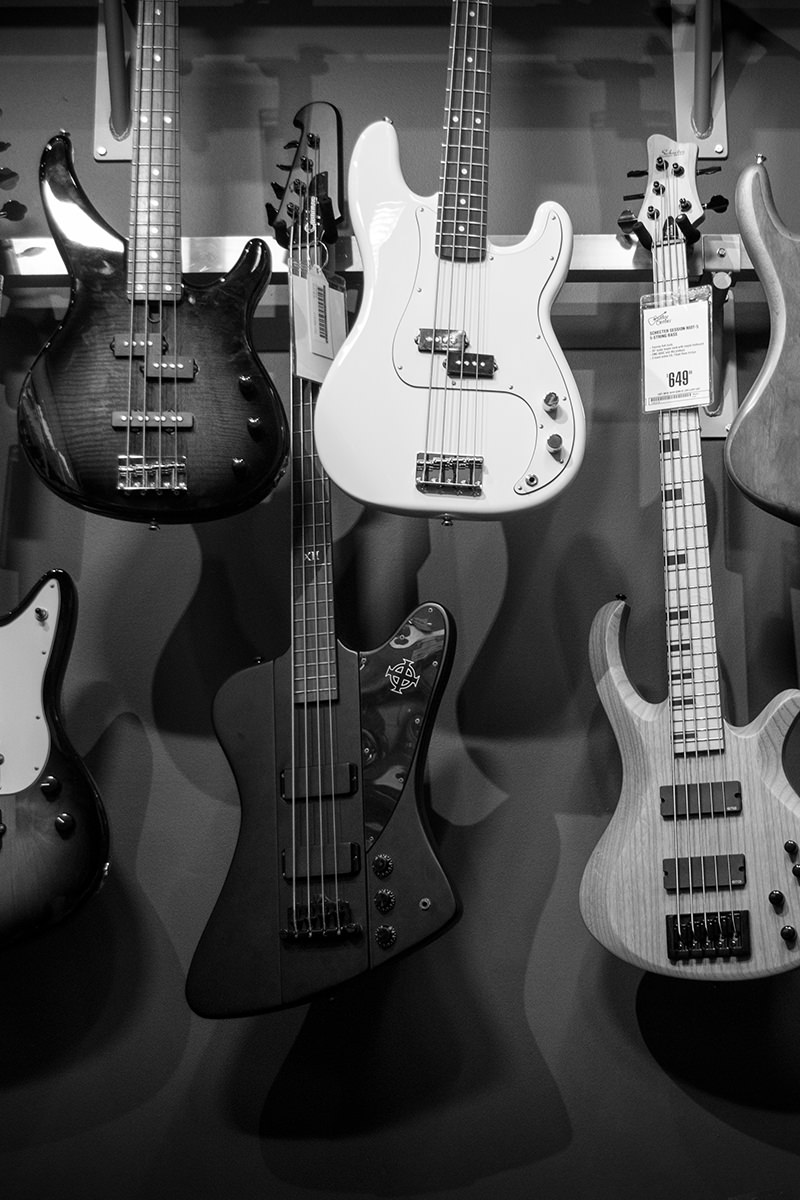


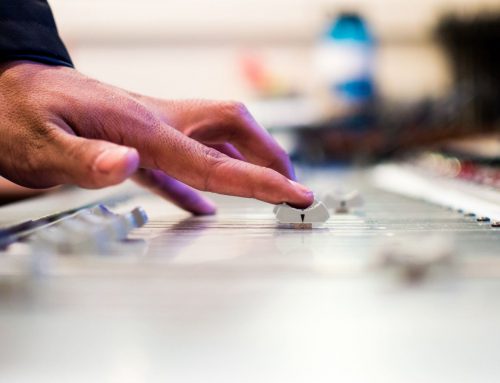
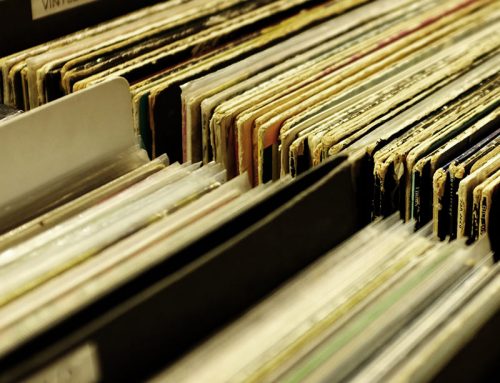
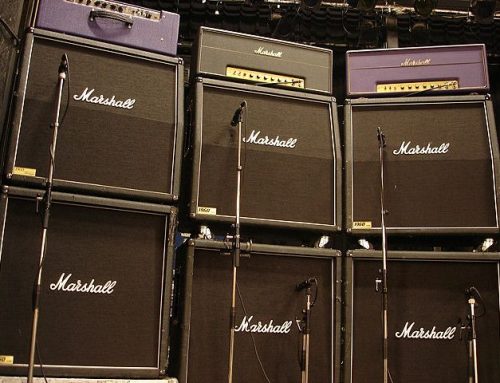
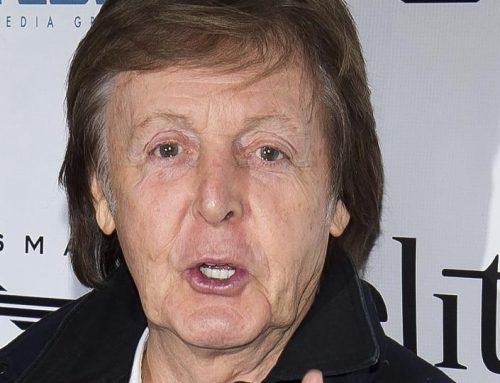
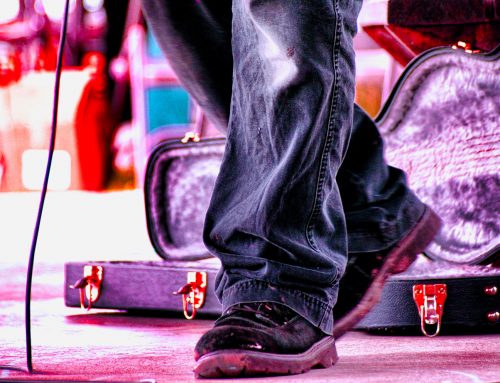

Leave A Comment
You must be logged in to post a comment.